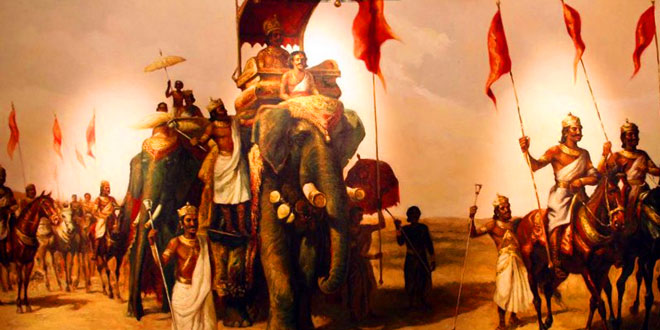Question: In what ways are present-day elections different from the ways in which rulers were chosen in ‘janapadas’?
Answer: Choosing rulers in ‘janapadas’—Men were chosen ‘rajas’ by performing big sacrifices. The ‘ashvamedha’ (horse sacrifice) was one such ritual which was used to identify a ‘raja’. The ‘raja’ chosen by this sacrifice was considered very powerful. Electing rulers today—Today, we have a democratic system of government. Each citizen has a right to vote and the government is decided by elections in which each citizen casts his vote.
Question: Find the state in which you live in the political map on page 136. Were there any ‘janapadas’ in your state ? If yes, name them. If not, name the janapadas’ that would have been the closest to your state, and mention whether they were to the east, west, north or south.
Answer: The answer depends on the region you live in. Take the help of your teacher and the map given on page 57 in the textbook to prepare your answer. However, a sample answer has been provided (using the state Uttar Pradesh) – The ‘janapadas’ in the present-day Uttar Pradesh—Panchala, Kosala.
Question: Find out whether any of the groups mentioned in answer 2 pay taxes to day.
Answer: Out of the groups mentioned in answer 2, those that pay taxes even today are traders.
Question: Find out whether the groups mentioned in answer 3 have voting rights at present.
Answer: Today, voting rights are not decided by gender or profession. Women, ‘khmmakaras’ and ‘dasas’—all are entitled to vote today.
Question: Write a short note on the ‘ashvamedha’ ritual
Answer: The ‘ashvamedha’ (horse sacrifice) was a ritual used to recognize men as ‘rajas’. A horse was left to wander freely. If it wandered into another kingdom and the king of that kingdom stopped it, they had to fight. The ‘raja’ who succeeded in the challenge was recognized as stronger. He would then perform the sacrifice, in which other kings would also come.
 Class Notes NCERT Solutions for CBSE Students
Class Notes NCERT Solutions for CBSE Students


